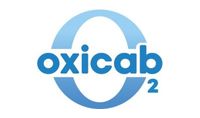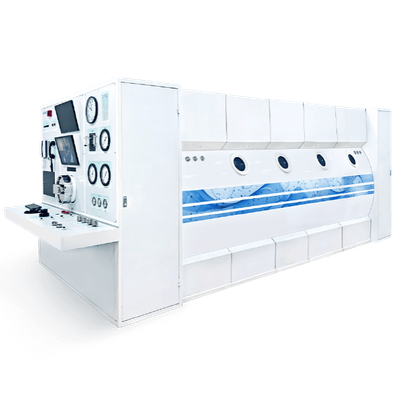

Hyperbaric SAC
- Home
- Companies
- Hyperbaric SAC
- Products
- Oxicab - Hyperbaric Oxygenation (HBO) ...

Oxicab - Hyperbaric Oxygenation (HBO) Medicine Machine
FromHyperbaric SAC
Hyperbaric oxygen therapy (HBOT) has become a specialized modern medical intervention with a history dating back to 1662 when British Doctor Henshaw hypothesized about the benefits of increased atmospheric pressure. By the 19th century, practitioners in Europe and North America were creating hyperbaric chambers to treat various medical conditions. Today, HBOT is widely used worldwide, facilitated by advances in aviation and marine diving research, particularly from NASA. It involves breathing pure oxygen at elevated atmospheric pressures, which significantly increases oxygen levels in blood plasma, enabling effective tissue oxygenation independent of hemoglobin saturation. HBOT is recognized for its benefits in revitalizing hypoxic cells, promoting neovascularization, and enhancing antimicrobial effects. It increases the efficacy of certain antibiotics and exhibits anti-inflammatory properties that help in edemas and traumatic ischaemias. The therapy is also used in preventative medicine as it helps in organ revitalization, which can fortify the immune system and overall health.Most popular related searches
hyperbaric oxygen
red blood cell
hyperbaric oxygen therapy
spinal cord injury
blood cell
blood plasma
reconstruction surgery
breathing oxygen
rehabilitation therapy
diabetes foot
Indications for application "Type I" (Accepted)
- Radio necrosis of soft and osseous tissue.
- Decompression sickness.
- Acute poisoning by carbon monoxide (CO) and smoke.
- Acute gas embolism.
- Gas gangrene.
- Anaerobic and/or bacterioid infection.
- Refractory osteomyelitis.
- Aerobic and/or anaerobic flora infections on tissues.
- Compromised skin flaps or grafts.
- Refractory Mycosis(zygomycosis and actinomycosis).
- Acute cerebral edema.
- Burns.
- Anemia produced by acute hemorrhage.
- Ileo-paralytic.
- Crush and compartment syndromes.
- Wounds Cicatrization.
- Tissue damaged by radiation.
- Intrabdominal and intracranial abscesses.
Indications for application "Type III" (In study)
- Guillain Barré syndrome.
- Peripheral facial paralysis.
- Ulcerous colitis.
- Vasculitis.
- Perthes disease.
- Post-Infarct Dementia.
- Acute crisis of drepanocytosis.
- Autism.
- Chronic hepatitis.
- Others.
- Traumatic spinal cord injury in its initial part.
- Bones graft.
- Acute cerebrovascular accident (thrombotic or hemorrhagic).
- Fractures consolidation.
- Lepromatous leprosy.
- Meningitis.
- Membranous pseudo colitis.
- Myelitis, cystisis,enteritis, proctitis, post radiation.
- Multiple sclerosis.
- Acute retinal arterial insufficiency.
- Gangrenous Pyoderma.
- Peripheral ischemic syndromes.
- Ulcers in limbs (of stasis, decubitus, varicose).
- Diabetic's foot.
- Cerebrovascular insufficiency.
- Edema cistoid.
- Diabetic's malignant Otitis.
- Migraine, too chronic,difficult to be treated.
- Infantile cerebral palsy.
- Vertigo.
- Sudden deafness.
- Sportsmen's Injures.
- Support to rehabilitation therapy in neurology and orthopedics.
- Support to plastic and reconstructive surgery.
Treatment with Hyperbaric Oxygen is a type of non-invasive therapy. The patient breathes 100% oxygen calmly while remaining in a pressurized chamber at a pressure two or three times higher than ambient atmospheric pressure. It is the only therapy indicated in certain cases and in many others, it helps in the treatment of diseases and difficult clinical or surgical problems, apart from producing a revitalizing effect in all tissues.
The crux of treatment with hyperbaric oxygen lies in the feasibility of blood plasma (which is the liquid where red blood cells float) to allow the dilution of oxygen, increasing the concentration of this element ten to fifteen times, which produces a Four times greater increase in oxygen diffusion from the functional capillaries to the cells. All this regardless of the level of oxygen carried by the hemoglobin of the red blood cells remains the same, which is what normally happens to us when we breathe 24 hours a day.
